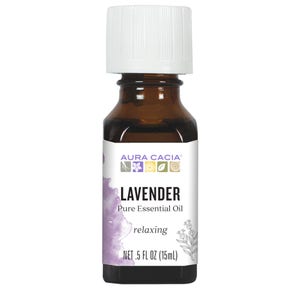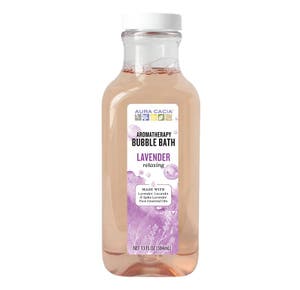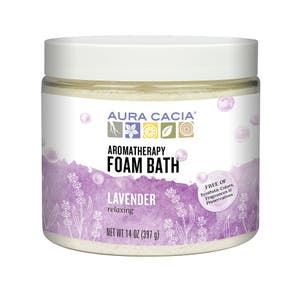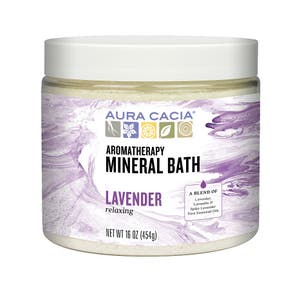Oh-La-La Lavender!
Smelling of fresh flowers and green herbs, lavender essential oil is the most popular in the world - I mean, who doesn't love lavender?
Lavender provides the most coveted aromatherapy benefits that we all know and love -- calmness, relaxation and all around good vibes. Its aroma is clean, fresh and lively but not sterile, sanitized or stimulating. These balanced and valuable benefits only come from true lavender essential oil, Lavandula angustifolia, distilled from the lavender plant, which has narrow leaves, short stems and a tuft of blueish flowers. Don't confuse lavender with lavandin, Lavandula intermedia, a hybrid species which has a more herbaceous uplifting and energizing aroma.
Let's learn a little more about all things lavender, shall we?
What Does Lavender Look Like?
Lavender plants are small, branching and spreading shrubs with gray-green leaves and long flowering shoots.
Where Does it Come From?
The three main producing countries are France, Bulgaria, and Ukraine. Aura Cacia Lavender Essential Oil comes from Bulgaria.
Lavender is harvested annually near or just after the summer solstice. The flowers only bloom for about two weeks, so the harvesting and distillation is often done all day and night. Lavender is harvested with a combine and immediately taken to the distillation facility.
Choose Wisely, Not All Lavender is the Same!
There are more than 40 species of lavender in the world, even though only three are commonly sold. Besides English lavender (Lavandula angustifolia), there is spike lavender (Lavandula latifolia) and a hybrid of the two, Lavandin (Lavandula intermedia). Look for both the common and botanical names on the labels to make sure you are getting the lavender best suited for your aromatherapy goals. If the common name doesn’t match the botanical name, chances are what’s in the bottle is not what you are expecting and may not achieve the intended aromatherapy benefit.
There are others out there:
- Lavandula vera – also known as an acceptable alternate name for the angustifolia variety. ‘Vera’ means true.
- Lavandula officinalis: The name Lavandula officinalis is sometimes used interchangeably with Lavandula angustifolia, or it is occasionally referred to as Lavandula vera.
- Lavandula spp. – This has been used to generally identify the lavender species, but isn’t necessarily specific to the angustifolia.
- Lavandula stoechas – Also known as Spanish lavender (sometimes called French or Butterfly Lavender), Lavandula stoechas has a very different profile from the other lavenders. This essential oil is rich in camphor and comes with safety considerations. This essential oil is best used under direction of a trained practitioner.
- Lavender 40/42: This product is typically used in candles, cleaners, lavender scented products and detergents and should not be used for general aromatherapy or for aromatherapy use. This is a standardized product often created with synthetic ingredients.
Bet You Didn't Know...
Lavender has a longer history of usage than almost any other essential oil. In fact, the term "aromatherapy" was coined by Rene-Maurice Gattefosse after his experiments with lavender.
Lavender blends well with many oils, including rose, neroli, citrus oils, rosemary, patchouli and the chamomiles.
In addition to its capacity to inspire calm, lavender essential oil is easy to use. Mixed with a skin care oil, lavender makes for a calming massage oil, body moisturizer or bath oil. Add sugar, ground oats or almonds to a skin care oil and lavender essential oil and you have a balancing body scrub. Or sprinkle a few drops of lavender directly on your pillows, bed linens and towels. The oil won't stain the fabric but it will imbue it with a fresh, calming aroma. Finally, perhaps the simplest and most effective way to use lavender is to diffuse it into the airspace with an aromatherapy diffuser or mix it with water in a spray mist bottle to clean and freshen your airspace.
Quick Tips with Lavender
- Put a few drops of lavender essential oil on your wool dryer balls for extra freshness.
- Add a few drops of lavender to your pillow case before bedtime.
- Diffuse lavender at the end of the day to bring calm to your day.
- Soothe your skin by adding lavender to unscented lotions and single ingredient skin care oils
- Add a few drops of lavender to refresh shoes.















